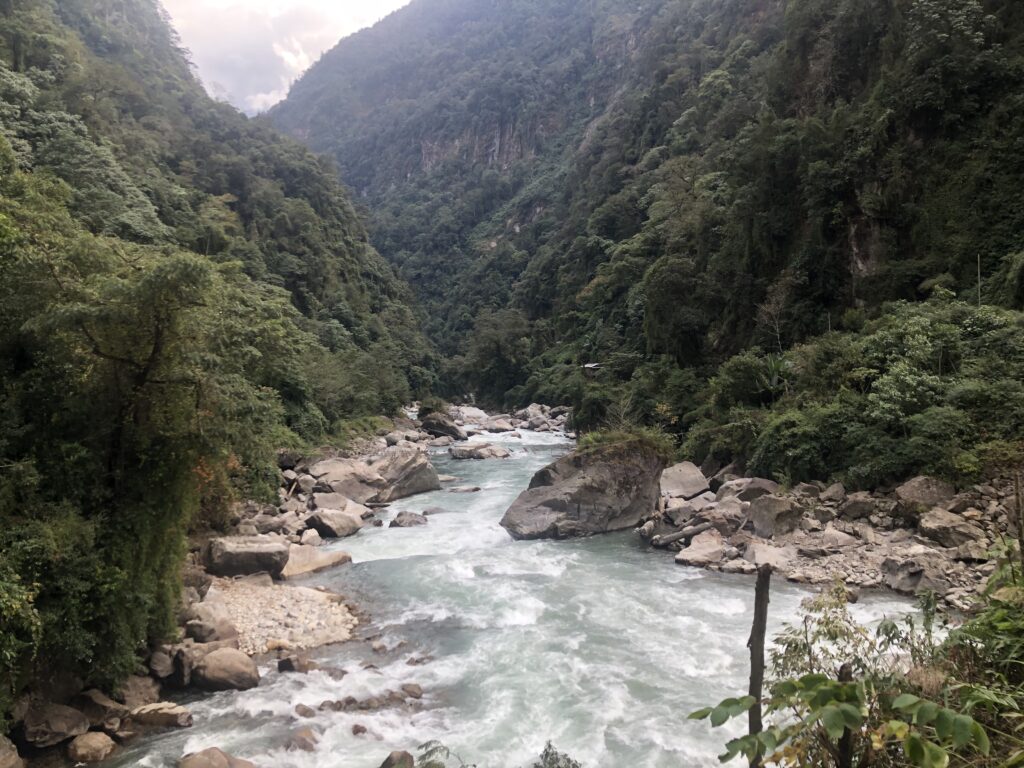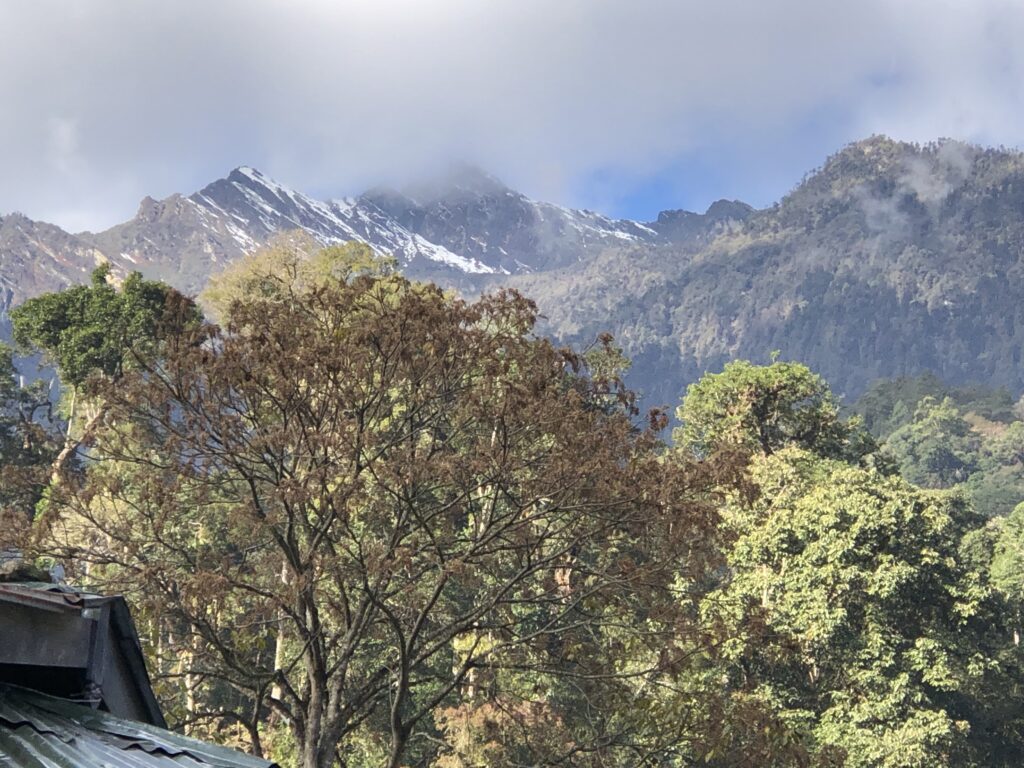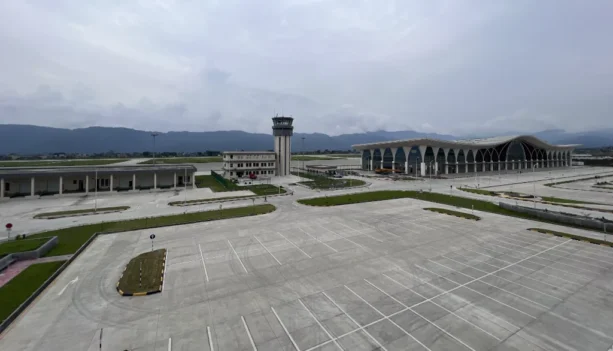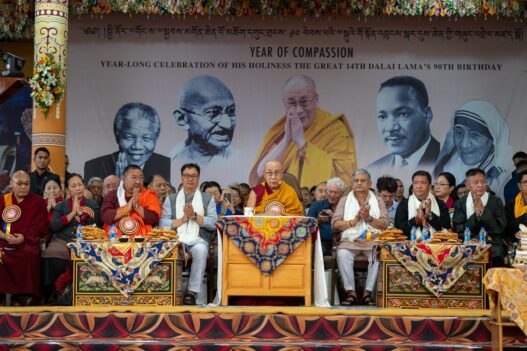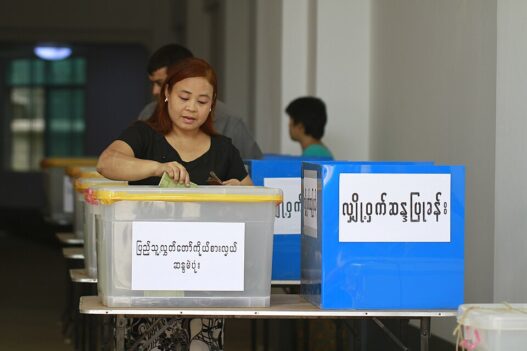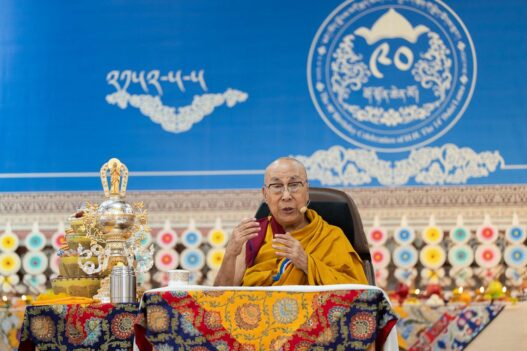Situated at a distance of over 20 kilometers from the Line of Actual Control (LAC) between India and China lies the picturesque bordering hamlet of Gelemo in the Upper Subansiri district of Arunachal Pradesh. Home to about 200 people of the Na Tagin tribe, the idyllic village surrounded by gigantic mountains of the Eastern Himalayas, the river Tsari Chu joining the river Subansiri flowing down majestically from Tibet intersecting the terrains is a perfect getaway from the madness of city life and living close to nature.
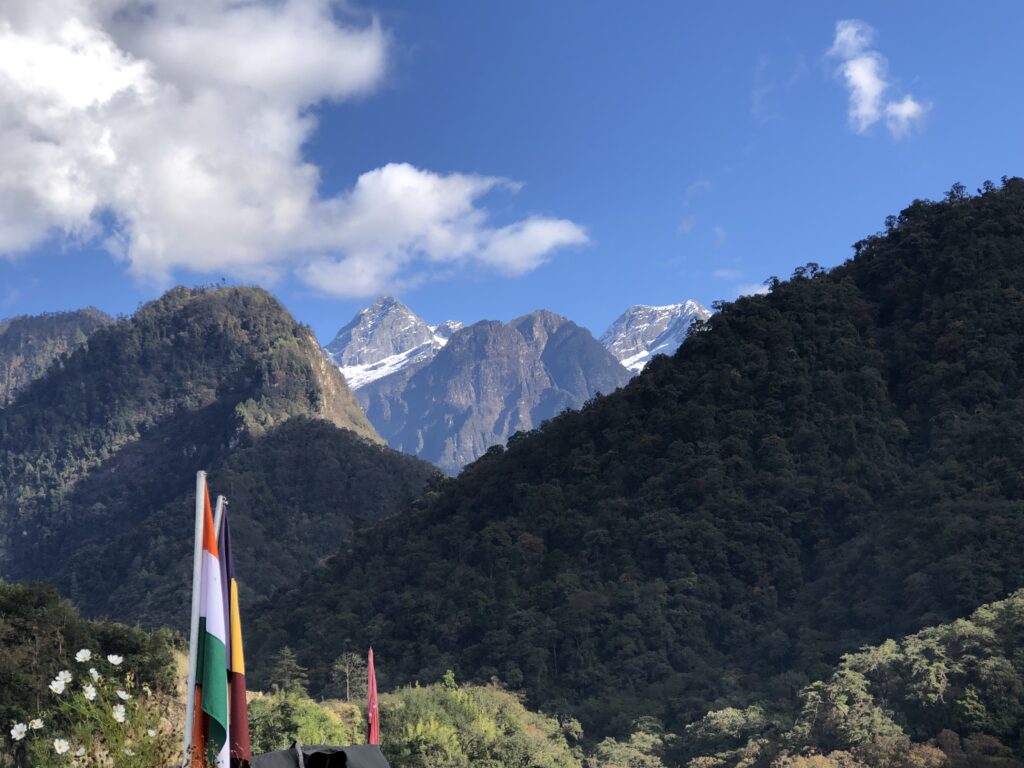
the Tsari Chu Valley in the background. Photo credit: Bidhayak Das
From remaining almost obscured and trapped in a state of underdevelopment for most of its existence until now, things are beginning to light up for the locals of this village. The past one year has been a witness to the first motorable road which was inaugurated in 2021 bringing hope to the hardworking villagers of Gelemo who patiently await their turn towards economic growth and progress with the rest of the nation.
The hamlet lies at at elevation of about 5,870 ft and about 17 kilometers to the north of the confluence point of the rivers Tsari Chu and Subansiri providing it with a unique ecology with abundant natural resources. It is also an important link route to the Maza border post along the LAC in the district.
An iron bridge, a signature infrastructure of Arunachal Pradesh, over the Subansiri at Gelensiniak serves as a strategic connecting point to the village, and further to the border. Following the newly constructed road by the Border Roads Organisation (BRO) along the Tsari Chu, one is greeted with varied wildflowers on both sides and the site of traditional stilt houses typical to the state welcomes to the village itself.
The journey for the Na Tagins who populate most of this tiny hamlet with a population size of roughly 40 people living in 11 households (2011 census) hasn’t been easy. “Lack of proper roads, difficult terrains and under development had virtually cut us off from the outside world,” says Tomar Sorang a local resident. All the people of this village were exposed to were the men in uniform – Indian armymen who have been guarding this extremely crucial and strategic frontier region of Arunachal Pradesh close to Longju in the Tsari Chu Valley where the 1959 clash took placed between the Assam Rifles and Chinese troops.
The turnaround came only recently with the central government’s push to take forward its “vibrant village” initiative all over Arunachal Pradesh. Black topped roads have come up in place of the kuccha rocky surface, reducing the drive by well over several hours from the nearest town, Daporijo. It took The Borderlens team barely two days to reach Taksing, the last village in the upper Subansiri district bordering Tibet, and from there another 1.5 hours to reach Gelemo.
The winding drive alongside the river Subansiri, its crystal light greenish water splashing against the foothills of steep green mountains on both its flanks, is breath-taking, but what adds to the scenic canvas are patches of green vegetations – oranges, apples, kiwi and banana plantations and a mosaic of other crops dotting most of the landscape in and around the village.
The organic splash
Gelemo boasts a plethora of fertile land suitable for organic farming. The tireless efforts of the villagers reward them with an abundance of fresh plump kiwis, organic fruits and vegetables. The soil fertility has been a key reason for this abundance which has made most people, especially those with adequate land and resources, to make Gelemo “an organic village,” in Upper Subansiri.
Tai Mara or tai Mra, the village headman of Gelemo is confident that the harvest will make the village more popular, besides its natural beauty. “There hasn’t been much of tourism here until now, barring occasional visitors,” Tai Mara says, even as he is full of gratitude to The Borderlens team for being the first to come to the village and interact with its people and write about them.
Most of the organic crops grown in the hilly terrains are consumed by the villagers themselves whereas the rest of it is supplied to the defence establishment stationed at Gelemo and nearby border outposts. Some of it are bought by contractors and workers of the Border Road Organisation (BRO) present in and around the village.
The organic offerings of Gelemo are still beyond the reach of city dwellers who are always looking for alternatives to the pesticide laden food that surrounds them. Ironically, the surplus of the nutritious fruit produce of Gelemo mostly goes to waste for the lack of proper markets and the fruit bounty far exceeding the needs of the village.
Approximately 70 percent of kiwis of Arunachal Pradesh are grown in Gelemo but naturally it deserves a better market outside the village and the state.
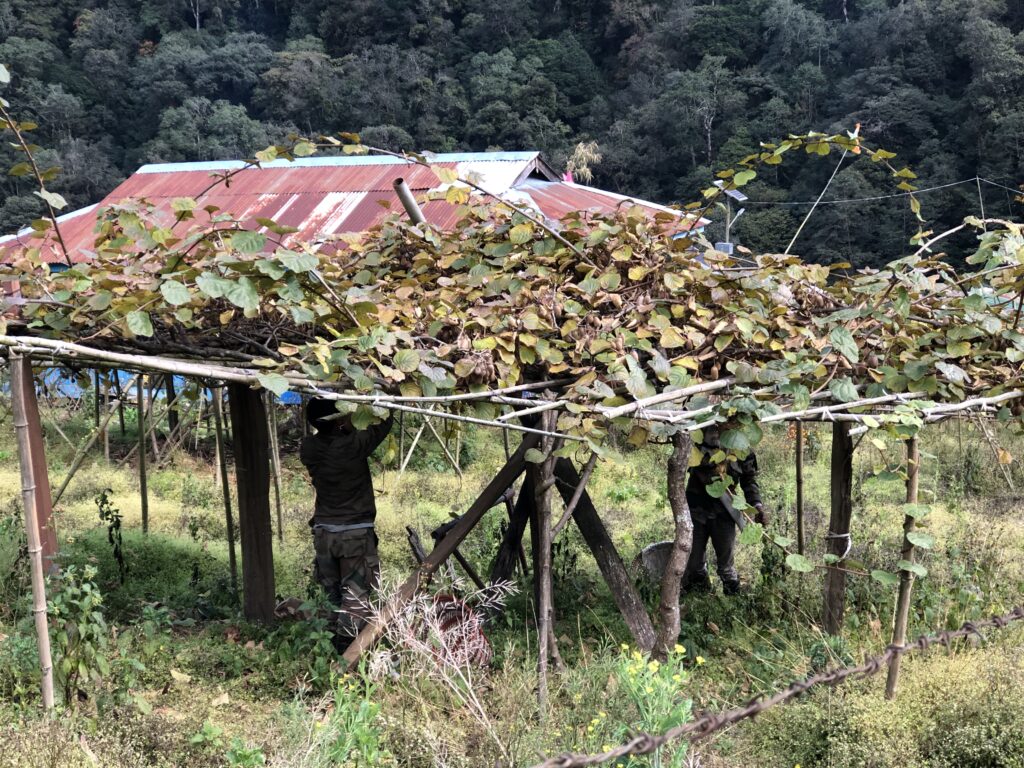
Tai Mara and his wife have been worrying about the future of their 3 hectares of kiwi plantation. As the sweet, juicy fruits are harvested in December, they know that they will have to sell most of them at a loss, even after selling them to the locals of the village and the army.
According to the headman, the cost of cultivating kiwis are high due to the need for special support structures for the vines made of bamboo which only last for one year, as well as the use of fertilizers and the labor required for pruning twice a month and protecting the crops from harsh weather conditions. Despite multiple requests for assistance from the government, Tai Mara and other villagers have not received any help and are forced to pay for these expenses on their own which can cost them lakhs of rupees.
“The crop is always good, but the bigger problem is finding a market. There is no fixed market for our kiwis, so we have to sell to the army or tourists who not only buy the kiwis but also other products, and distribute them to other camps outside Gelemo. Fresh kiwis are sold between Rs 100 and Rs 200 per kg depending on the size but there is still a lot of excess produce that goes to waste,” he added.
Tai Mara wants to urge the government to set up cold storage and food processing facilities in Gelemo so that they can preserve and process the excess produce. In addition to kiwis, the village also has a surplus of oranges and apples in the village awaiting a market. To ensure less damage, they have started making kiwi juice and looking to make other processed items without any government support.
Making ends meet
The village has been set up as a model village by the state government with solar street lights, water supply, a healthcare facility that is now defunct, and a primary school. But to date, the villagers are solely dependent on the Indian Army for healthcare.
The daily dependency of this backward border village like most others on the Indian Army is much more than just for security as is usually thought to be. The army, apart from offering its services for the security of the nation, works on humanitarian grounds for the villages which is significant for the latter’s sustainability.
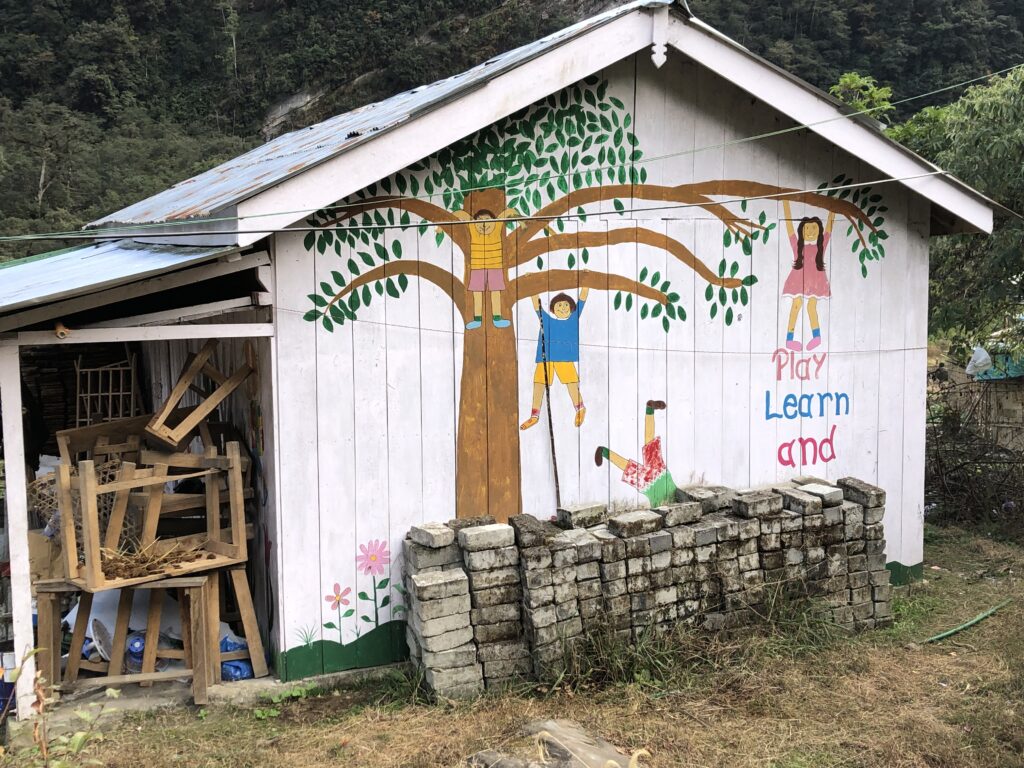
Tai Mara lamented that the house built as a healthcare facility is now being used mostly as a storehouse as there had been no healthcare workers. “Nobody wants to visit such far away villages. They are only occasional daylong healthcare services. Our concerns are primarily addressed by the army doctors who treat the patients in their primary facility. Else patients are sent to Daporijo which is usually a two-day journey owing to bad road conditions.”
Apart from the solar panels, every household receives about 2 hours of electricity every evening from the Indian Army camp. “In these two hours we get to cook and have our dinner, and we are really grateful for that to the army.”
The army also buys organically grown fruits and vegetables from the village, helping the latter with a few additional amounts of money. Additionally, the Tagins also earn by serving as porters to the army, helping them carry heavy baggage on mountainous treks.
However, given the warmth of their hospitality, the villagers desire to set up Gelemo as a tourist destination like Tawang, Menchukha and other parts of Arunachal Pradesh. For they understand that the foremost requirement would be good mobile and broadband connectivity. “Gelemo can be a good recreational place, and we are ever ready with our hospitality. The people here can see and understand the border, the Himalayas, and can breathe free. But in a fast running world, tourists would require mobile and internet services and of course, a market. With these basic facilities we can do a lot for our own economic growth,” concluded the village headman.
Infrastructure Building
Most of the road constructions in Gelemo are done by local labourers. Unlike construction activities in the plains where labourers are hired from outside, the villagers of Gelemo are involved with the Border Roads Organisation (BRO), earning a livelihood while constructing their own roads.
“It has been only two years that roads have been constructed in our village. All these years we were almost secluded and it took us two days to walk up from the last motorable point at Limeking. Now that the government is working for our development, we should also offer our services to our country. And it pays us well, about Rs. 700 per day,” said a 54-year-old man.
However, it is not just the Tagin men but also the women of all ages who are actively involved in the work. Those who are not associated with the BRO run a store. Yes, almost every household in Gelemo has a small shop in front of the house selling regular groceries, seasonal fruits, organic vegetables, and alcohol.
While the villagers continue to follow their traditional lifestyle on stilt houses, replacing their thatched roofs with tarpaulin sheets instead of tin roofs (for lack of money), the earnings are invested in their children to pursue higher studies. Apart from the few pursuing higher education in the village school, also set up by the Indian Army, the rest are sent to Daporijo, Itanagar, and other places for schooling.
This village which as Tai Mara and others say has seen “lots of changes” from what it was before, especially with road connectivity infrastructure upto Maza completed recently. The central government is going all out to develop this highly strategic location along the Tama Chung Chung (TCC) – Maza road which incidentally is where Havildar Shere Thapa of 2 JAK Rifles had killed 155 Chinese soldiers on October 18, 1962. A memorial dedicated to the martyr stands testimony to the story of valour and sacrifice of the Indian army which also makes the travel to Gelemo a worthwhile experience.
